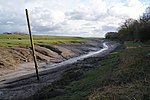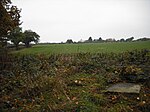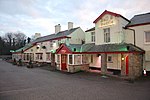River Douglas, Lancashire

The River Douglas, also known as the River Asland or Astland, flows through parts of Lancashire and Greater Manchester in North West England. It is a tributary of the River Ribble and has several tributaries, the major ones being the River Tawd and the River Yarrow. In 1720 an act of Parliament was passed allowing Thomas Steers and William Squire to make the Douglas navigable to small ships between Wigan and its mouth. Amid financial irregularities, the Douglas Navigation was not completed until 1742, and by 1783, it had been superseded by the Leeds and Liverpool Canal. It reverted to being a river, although the remains of several locks can still be seen between Parbold and Gathurst. The Rufford Branch of the canal joins the river at Tarleton. The river rises on Winter Hill on the West Pennine Moors, and flows for 35 miles (56 km) through several towns and onto the Ribble estuary past Tarleton, the last 10 miles (16 km) or so being tidal. In 1892 the Douglas was diverted in Wigan to allow the construction of Wigan Central railway station.
Excerpt from the Wikipedia article River Douglas, Lancashire (License: CC BY-SA 3.0, Authors, Images).River Douglas, Lancashire
South Ribble Longton
Geographical coordinates (GPS) Address Nearby Places Show on map
Geographical coordinates (GPS)
| Latitude | Longitude |
|---|---|
| N 53.7347 ° | E -2.8550722222222 ° |
Address
Longton
South Ribble, Longton
England, United Kingdom
Open on Google Maps







